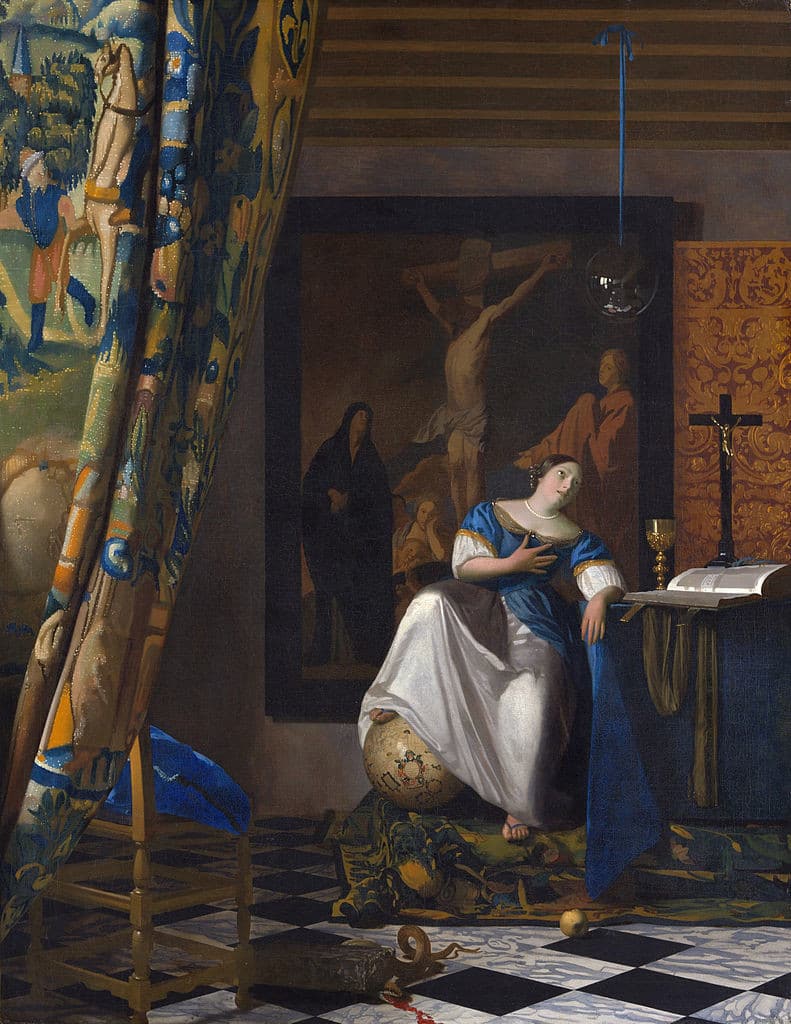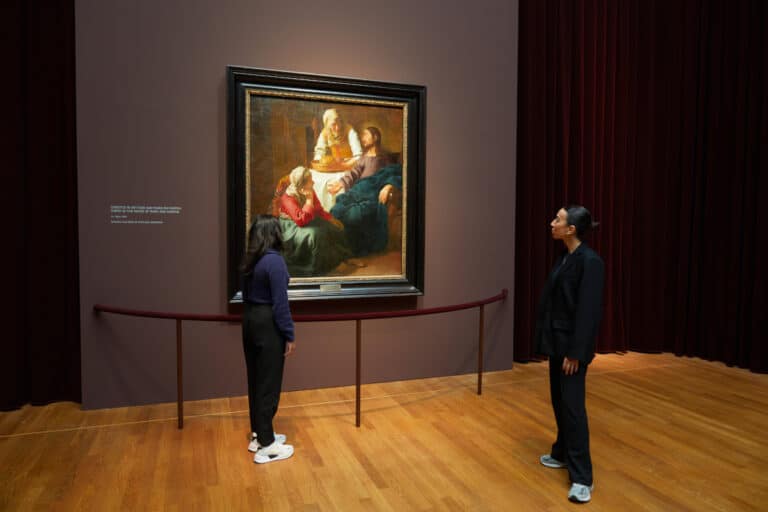Johannes Vermeer, “Christ in the House of Mary and Martha” (ca. 1654-55), owned by the National Galleries of Scotland, Edinburgh, and displayed at the “Vermeer” exhibition in Amsterdam (Photo: Rijksmuseum)
Utrecht.— The recent “Vermeer” exhibit at the Rijksmuseum in Amsterdam, which has proved an enormous success, has roused interest once more in the works of the Delft artist and the man behind them, raising the question of whether Johannes Vermeer was Catholic. There have been a number of different answers to this question over the years. Outside the Netherlands, it’s taken as fact that he was. But for those with a deeper historical perspective, the question is more important than meets the eye, because Vermeer lived during a time when the Netherlands went from being under the Spanish crown to a maritime Republic with a single, Protestant creed.
Along with the exhibition catalogue, the curator, Georg J.M. Weber, published “Johannes Vermeer: “Faith, Light and Reflection.” Weber’s research situates Vermeer in a new context: he was closer to the Catholic faith than previously believed. Although the author does not confirm it due to lack of reliable evidence, he is firmly convinced that this was indeed the case. In the following interview, he explains some of the findings of his research.

— Johannes Vermeer’s baptismal certificate shows he is a member of the Protestant Church. What makes you think he converted to Catholicism?
— His marriage to Catharina Bolnes. His mother-in-law, Maria Thins, who initially was against Vermeer’s marriage to her daughter, had a change of heart, but the reason why is unknown. There’s no evidence that he converted to Catholicism to marry Catharina. But it’s said that Maria raised the issue with the Jesuits and ensured that the requirements of a mixed marriage were met for her daughter, which certainly wasn’t common at the time.
— Are there any signs of Catholicism in the Vermeer household?
— The children were educated in the Catholic faith and his sons have names of Catholic saints. His first child, a daughter, was named Maria, like her grandmother; but it’s also the name of the Mother of God. His second son was named Francisco, like the Jesuit missionary Francisco Javier, and his ninth son was named Ignacio, just like the founder of the order. These names, if Vermeer had been a Protestant, would have been unthinkable at the time, comparable to a Jew of the time naming their son Muhammad.
There was also a Catholic girls’ school right next to the Vermeer’s house that their daughters attended. The children adhered to the faith, and later his grandson Aegidius, his oldest daughter’s son, became a priest. It wasn’t just Vermeer and Catharina’s children’s names; it´s clear they gave their children a Catholic upbringing. This makes it even more likely that Vermeer had converted to Catholicism.

— Are his religious-themed paintings indicative of his faith?
— He must have seen a lot of Catholic art and used the Jesuit network to do so. In one of his first paintings, Christ in the House of Mary and Martha, he approaches the subject matter differently from his contemporaries. Instead of focusing the scene on the kitchen utensils and surroundings, Vermeer highlights the three figures, who are represented almost life-size. We see Martha’s complaint to Jesus about her sister and His words to her. This makes the representation a religious piece.
In The Allegory of Faith, the central figure of the painting looks up at a glass sphere that hangs from the ceiling reflecting the room’s light. Within the large glass sphere’s reflection, you can see the book “Emblemata sacra” by the Flemish Jesuit Willem Hesius (1601-1690). Light plays an important role in Jesuit literature, and it’s used as a metaphor in preaching. For example, the analogy of how light taken in by the eye can be compared to the moral aspect of divine light entering the soul.
In Fr. Engelgrave’s Jesuit sermon manual “Lux Evangelica,” the author uses dark rooms as an example to explain how a thought penetrates the heart. Despite his fascination with ophthalmology, there is no evidence that Vermeer actually used a dark room.
* * * * *
Weber’s arguments are not entirely new. A book by Jesuit historians Dries van den Akker and Paul Begheyn, “Johannes Vermeer en de Jezuïeten in Delft” (Adveniat publisher, 2022) poses arguments along the same lines as Weber’s.
Translated from Spanish by Lucia K. Maher
